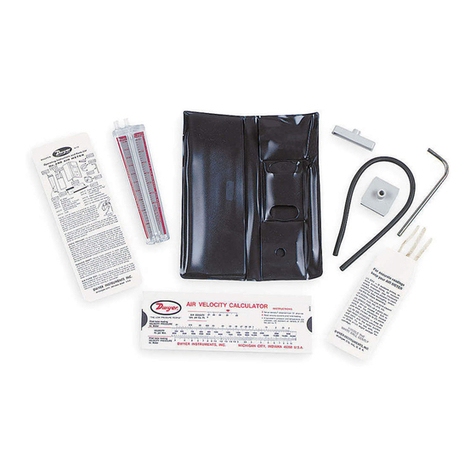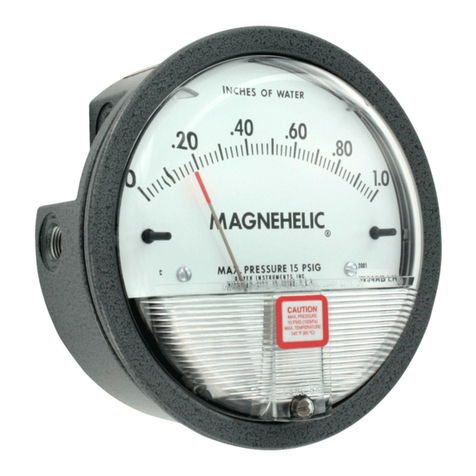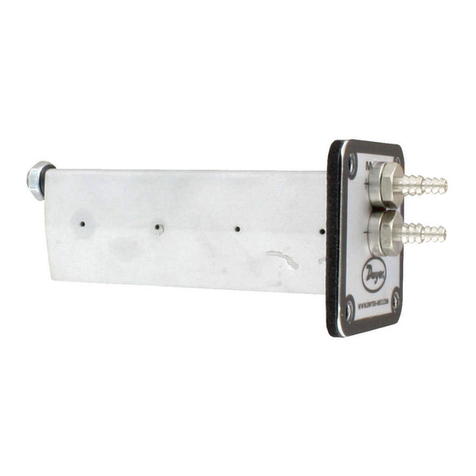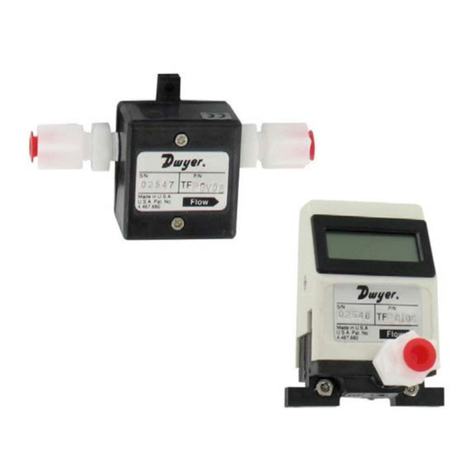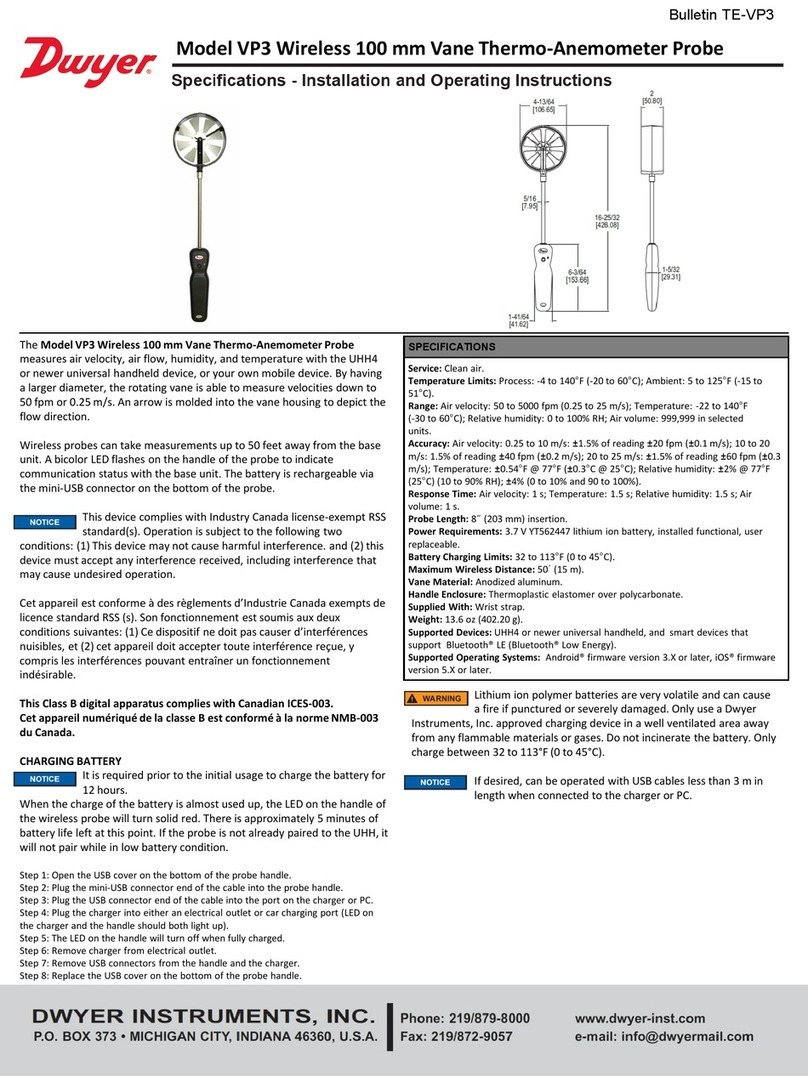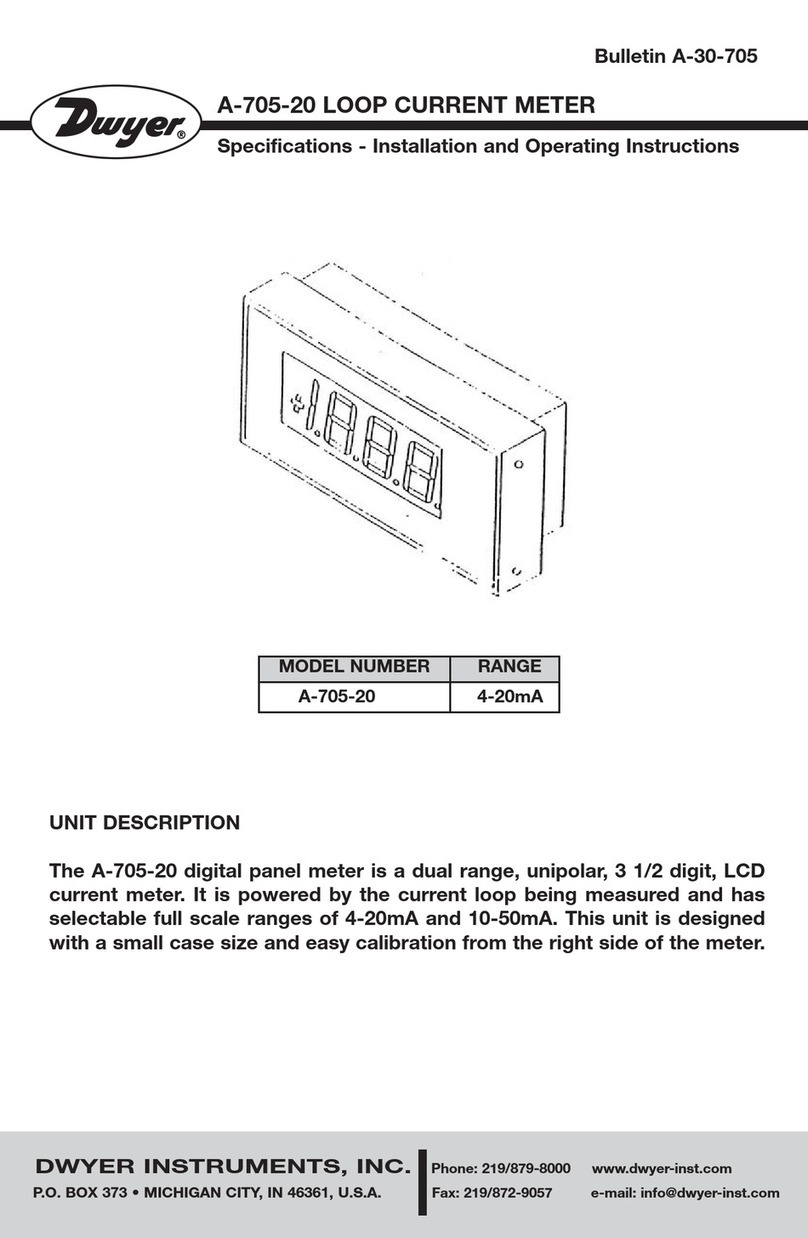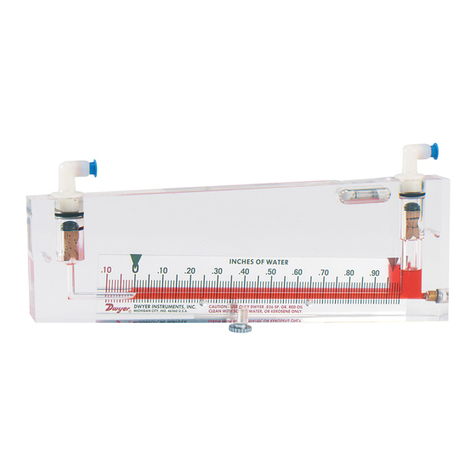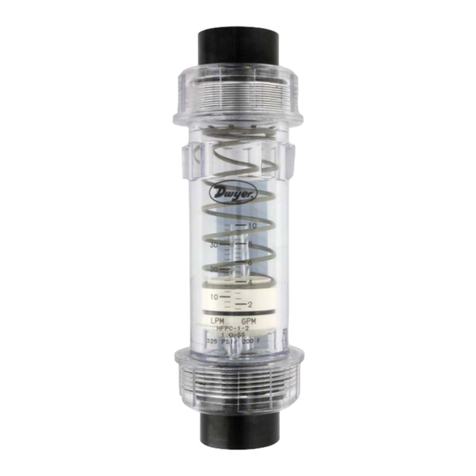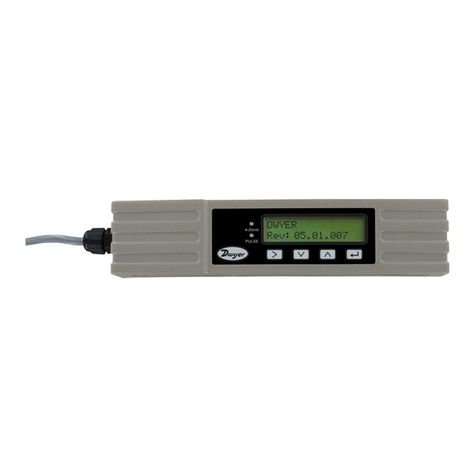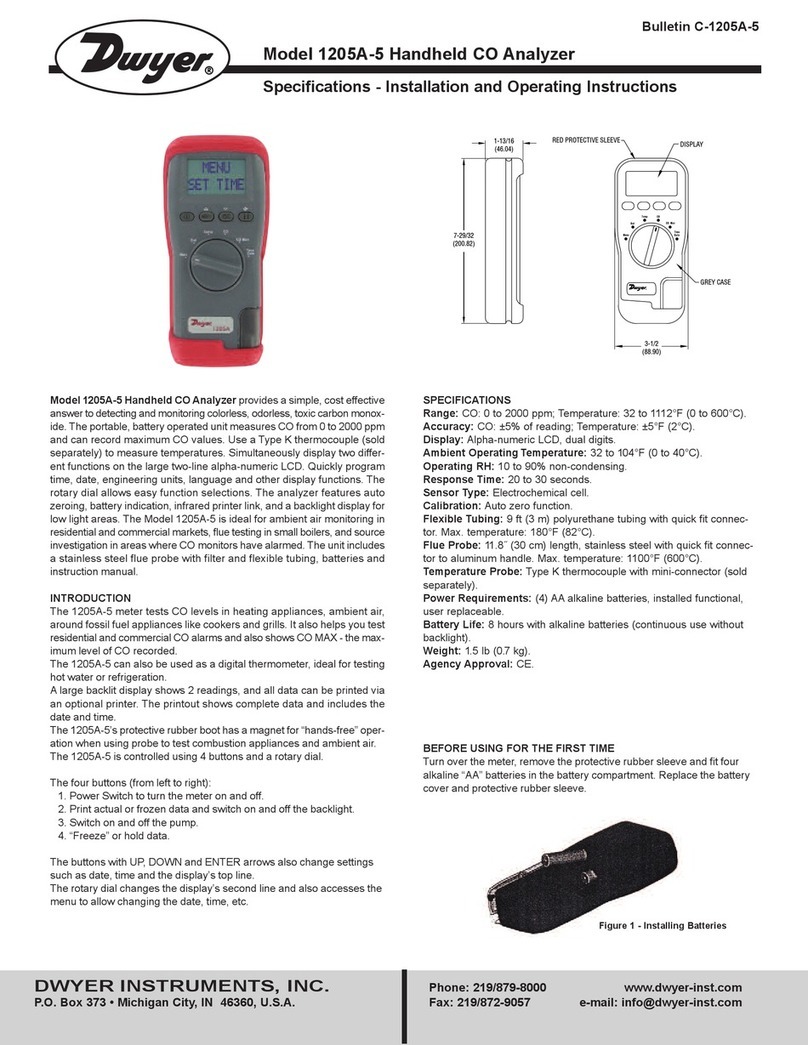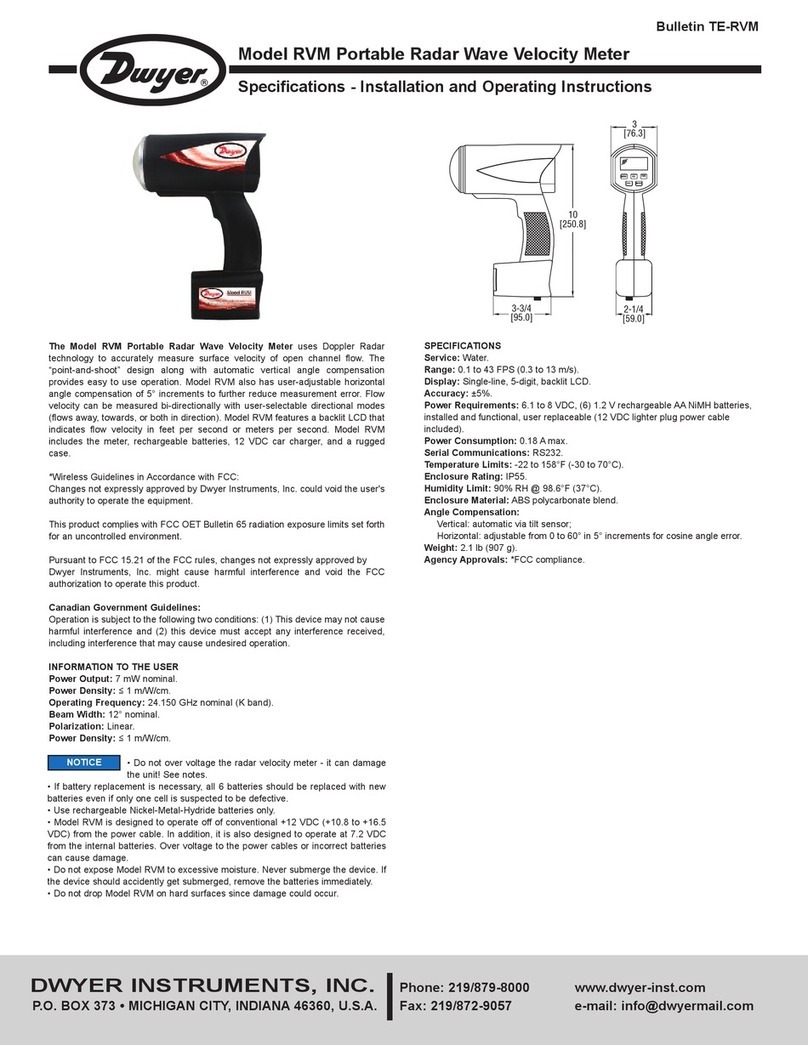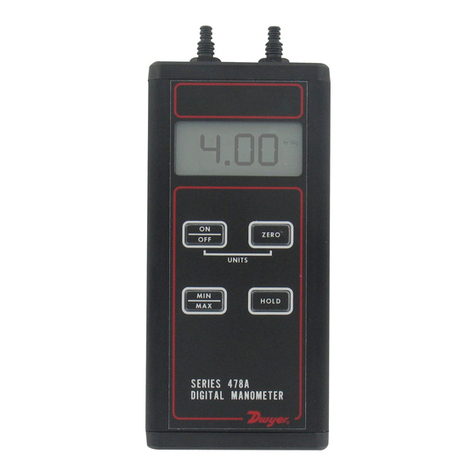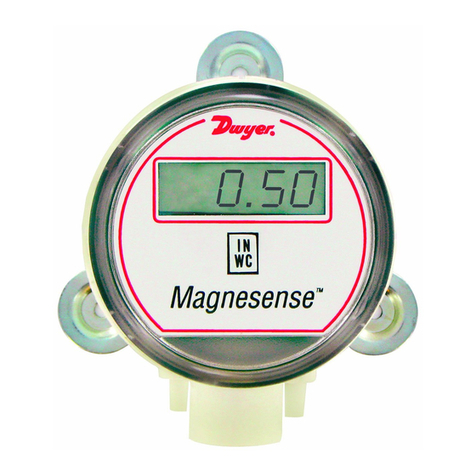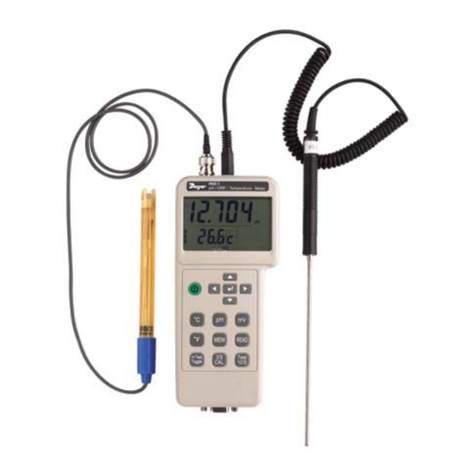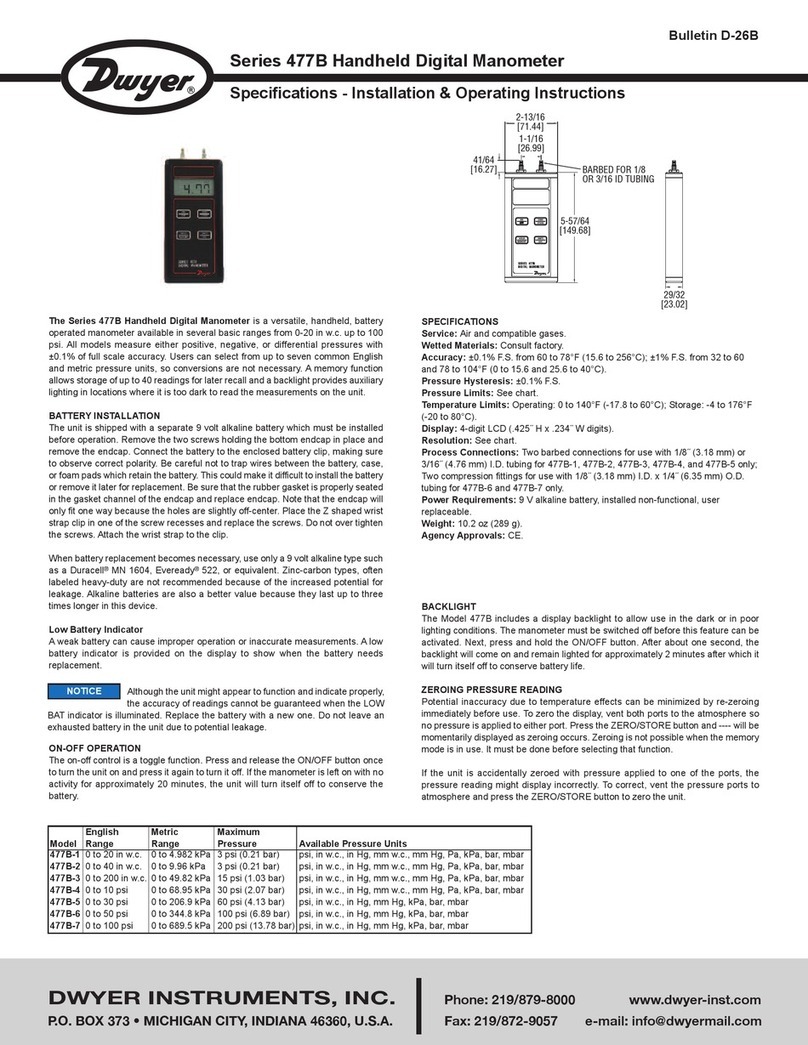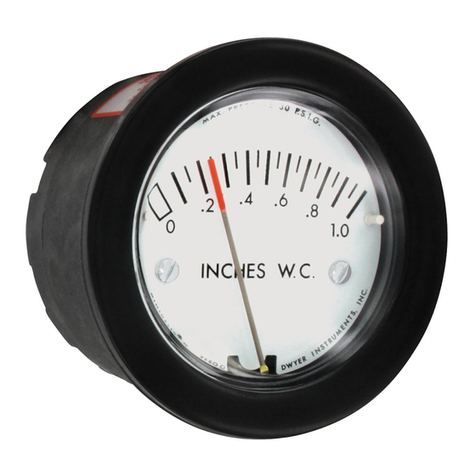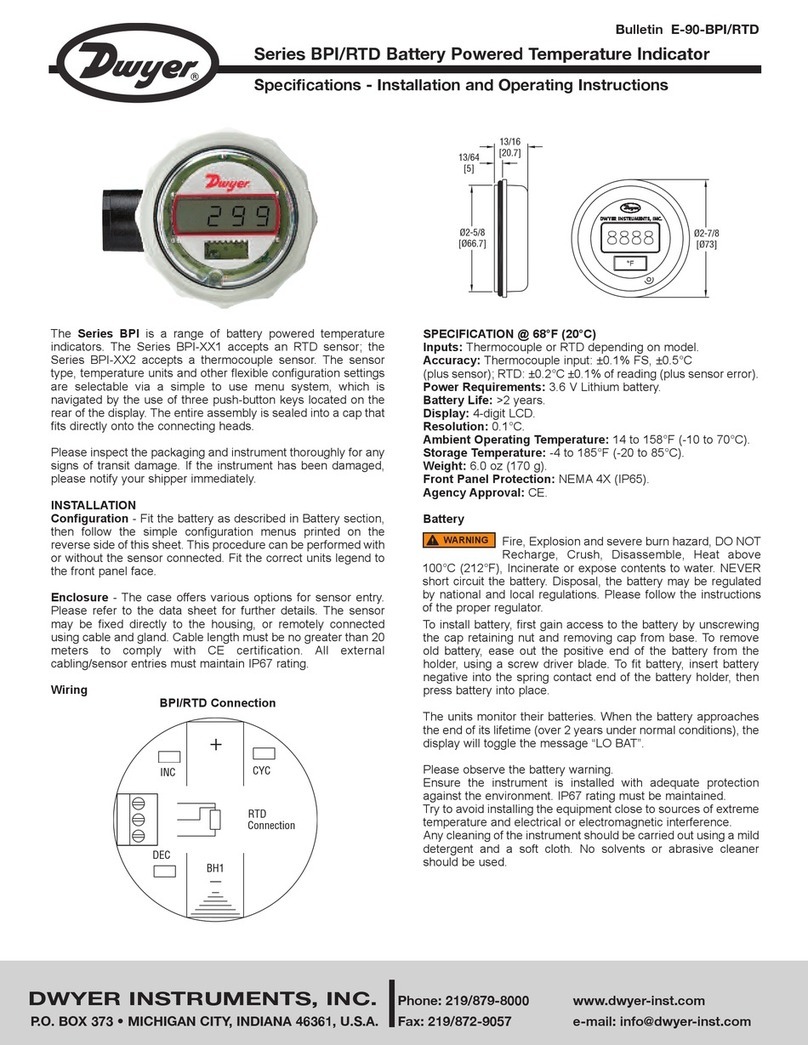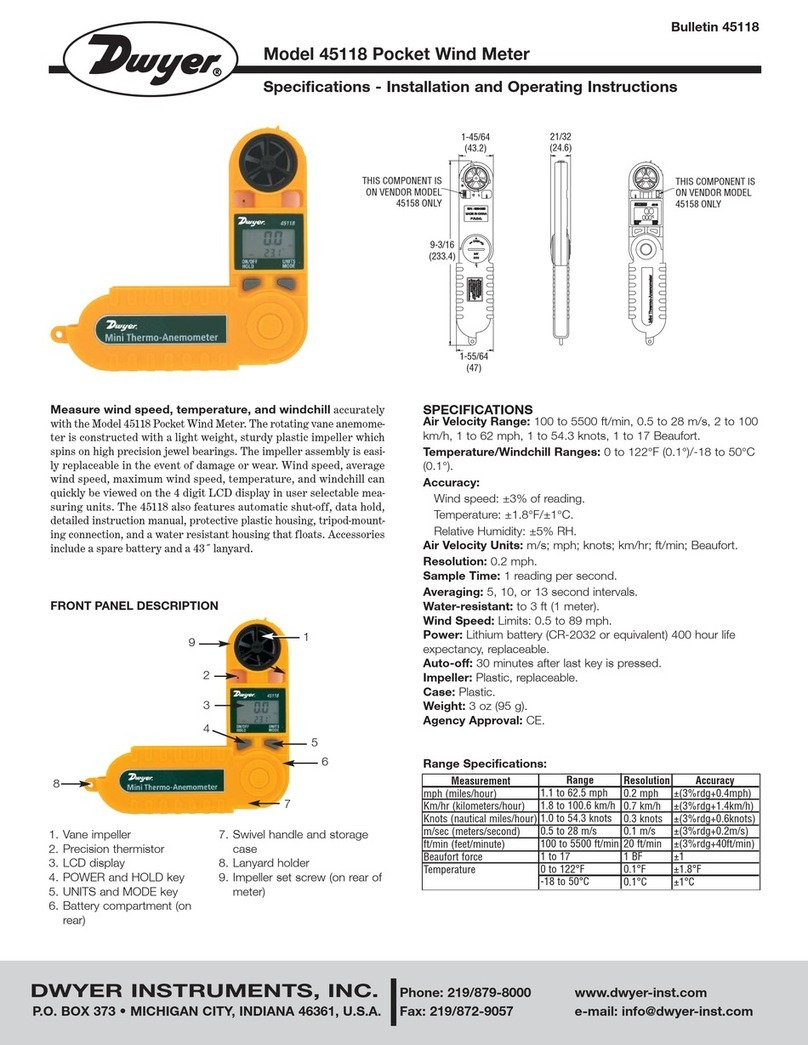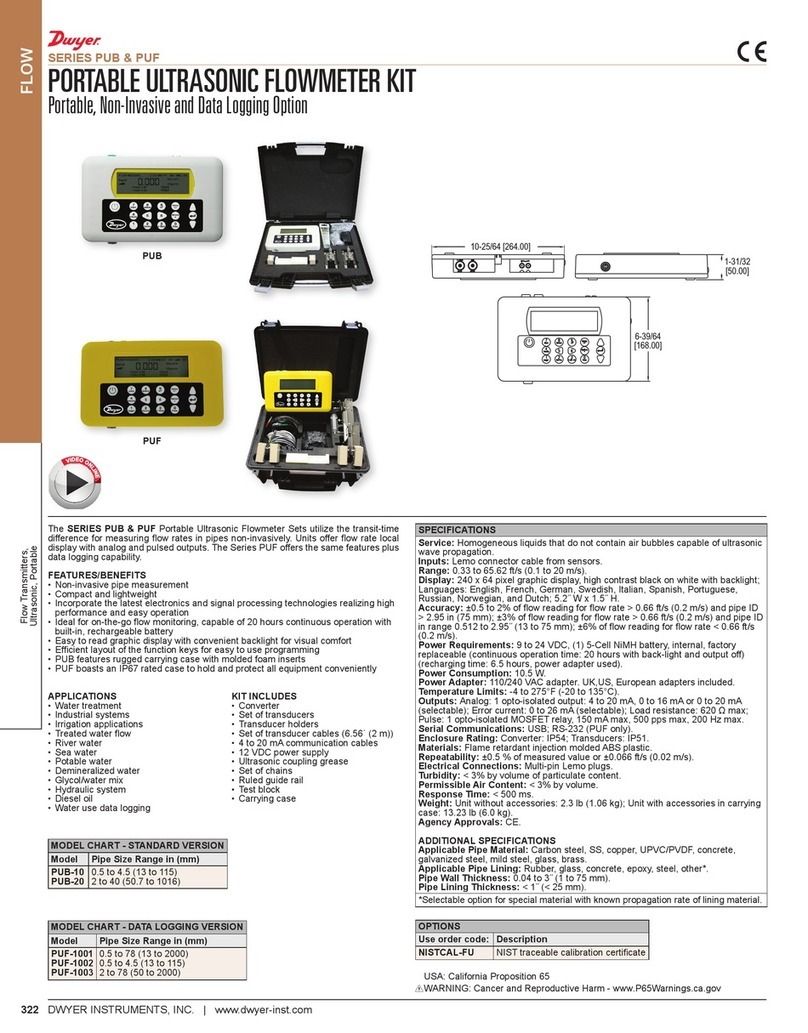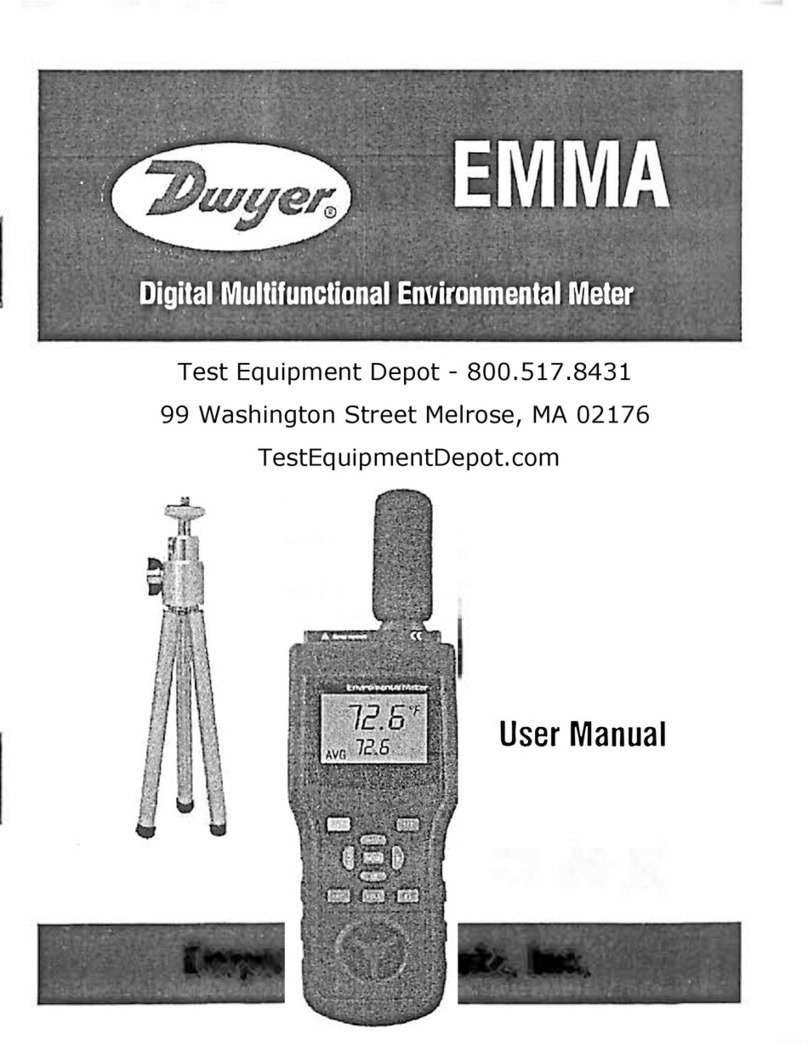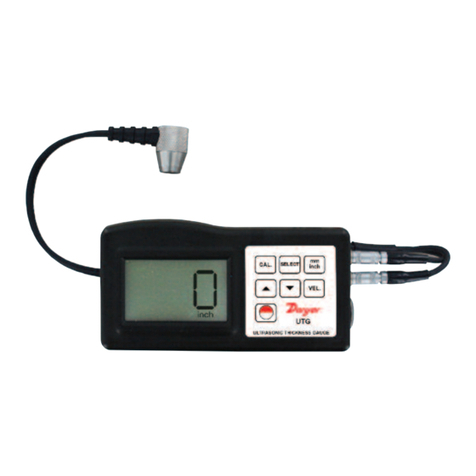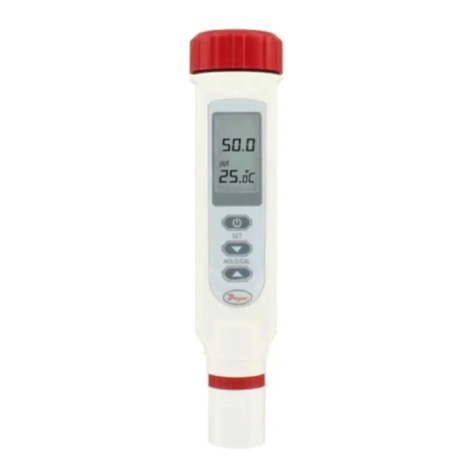
TROUBLESHOOTING
SUGGESTED REMEDY
Remedies include tapping the meter gently to temporarily
dislodge the float, but if problem reoccurs, meter should
be disassembled & cleaned, and/or snorkel/guide rod
straightened. If hang-up caused by sludge or pipe scale,
clean lines & install a filter or other form of cleaner in supply
line. If surges have caused the internals to unseat, install a
desurger, accumulator, etc.
Modification of piping, such as addition of a desurger,
receiver, accumulator, vibration eliminators, loops, hoses,
etc. between the source and meter should remedy the
problem. Severe vibration may ultimately damage the
meter, and should be avoided. If “bounce” seems to be
from some other source, or shocks such as “water
hammer” (a potentially dangerous condition), discontinue
using the meter and contact Dwyer Instruments, Inc.
Check the ball alignment to magnet by removing the
raceway cover and using the tip of a small screwdriver to
locate the float magnet. Rotate the sight tube as required,
and replace raceway (or disassemble meter to change
magnet position if required). If the alignment is okay,
eliminate system shock or surges with desurgers or
accummulators.
By determining the actual density (due to changes in
mixture, temperature, etc.), the correction formulae may be
applied. If dissolved gases are in the liquid, some
elimination means should be provided on the supply side
(also recheck all piping, as improper seals at connection
points are common sources of air in the liquid). If the
metered liquid is near the boiling point producing partial
“flash gas” at the meter, relocate the meter to point of
lower temperature and/or higher pressure, or cool lines
and/or increase system pressure. Note: It is potentially
dangerous to meter near the “flash point” of any fluid, and
this practice should be avoided. Consult Dwyer
Instruments, Inc. for recommendations. The previous
recommendations regarding cleaning the meter and/or
filtration will also solve problems due to dirt. If metering
liquids with high viscosities, consult Dwyer Instruments,
Inc. (may require special calibration). If none of these
causes seem to be present, contact Dwyer Instruments,
Inc. for assistance.
Verifying the proper fluid conditions are known and
applying correction formulae as needed will remedy
problems associated with changing fluids. Cleaning,
servicing, and replacement and/or repair of other system
components may be required.
Replace any damaged parts immediately, using the proper
assembly procedures indicated in this instruction and the
assembly detail drawings.
Remove the body and inspect for damage-if none is
visible, check pipe threads, reapply proper thread
lubricant/sealant, and reinstall. If leak persists, replace
meter body.
USUAL CAUSE
Caused by particles, sludge, etc. (including failure to
remove the plastic tubing used to block meter float during
shipment) inside the core tube and/or sight tube holding
float. A bent snorkel tube/guide rod (usually caused by
careless disassembly or violent surges) may also be
causing float to stick. Violent surges may also unseat the
internals in extreme cases.
Caused by pumping/compressor surges or other pulsation
sources, loose valve disks or similar mechanical
components, extreme violation of inlet piping
recommendations, or for gas applications, harmonics
commonly found in systems with low pressure, low density
gas.
Caused either by rotating the sight tube without realigning
the float magnet, or sudden flow surges or shocks.
Liquid density not according to calibration data (differ
temperature or new liquid or liquid mixture), excessive
dissolved or suspended solids or gases, partial clogging of
core tube slot or foreign matter interfering with float
movement, or viscosity levels above the meter’s immunity
index (V.I.C.)
NOTE: If the meter is suspected of giving false readings,
and none of the causes mentioned is found, please advise
Dwyer Instruments, Inc. as to the method used in
determining the suspected flow “error”. Each Flowmeter is
individually calibrated by traceable methods, and carefully
inspected. There may be some error in checking the meter
against another standard.
Frequently caused by use of soft disc type valves, which
may need to be replaced with a valve more suited to flow
control. Can also be indicative of changing fluid conditions
(density, viscosity, etc.). Problems with other elements of
the flow system, including leaks, clogged filters,
pump/compressor wear, etc. may first appear as a change
in meter reading-one of the functions of a flowmeter.
If at the junction of the body and sight tube, it is indicative
of either (a) damaged O-ring (most common); (b) damaged
sight tube; or (c) damage to the gland section of the body.
It may also be caused by improper reassembly of the
flowmeter in the field.
If there is leakage at the pipe connections to the meter, it
is probably caused from over-tightening pipes on a prior
installation (or the initial installation).
SYMPTOM
FLOAT HANG-UP:
FLOAT BOUNCE:
LOSS OF BALL INDICATOR:
APPARENT FALSE
READINGS, LIQUID
METERS:
APPARENT METER
READING MIGRATION
(reading changes but flow
appears constant):
LEAKAGE:
NOTE: Flowmeters are hydrostatically pressure tested before they are shipped. Dwyer Instruments, Inc. encourages you to contact your Dwyer Instruments, Inc. representative or
the factory with any questions regarding proper installation and operation of our flowmeters.
F-41-B 8/1/07 1:40 PM Page 7

